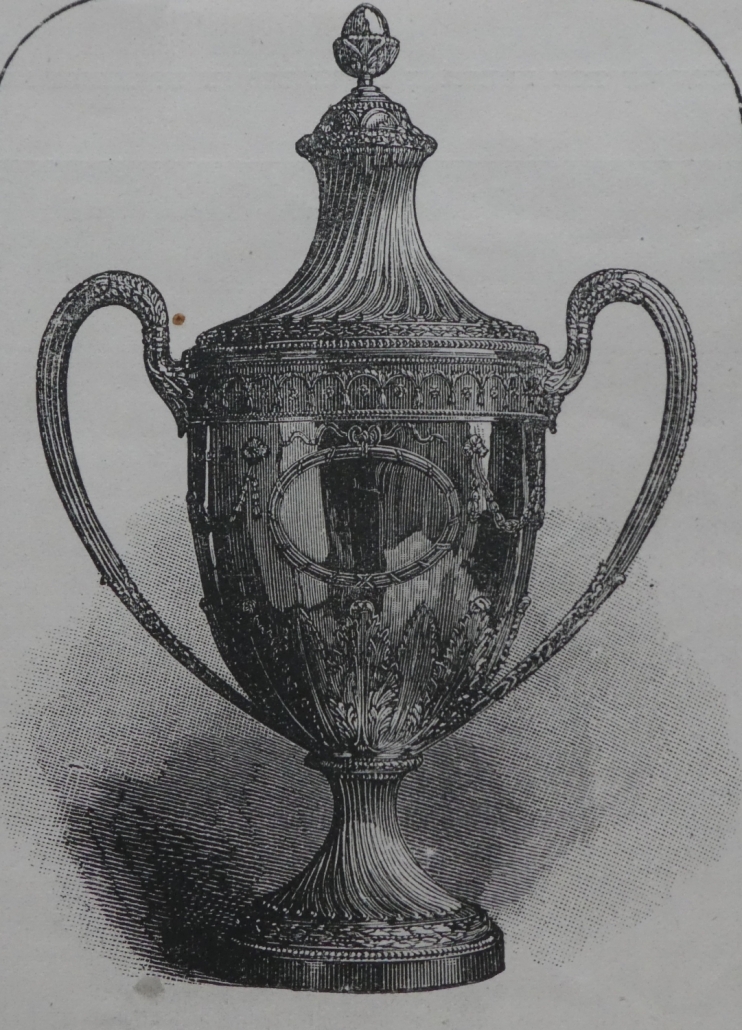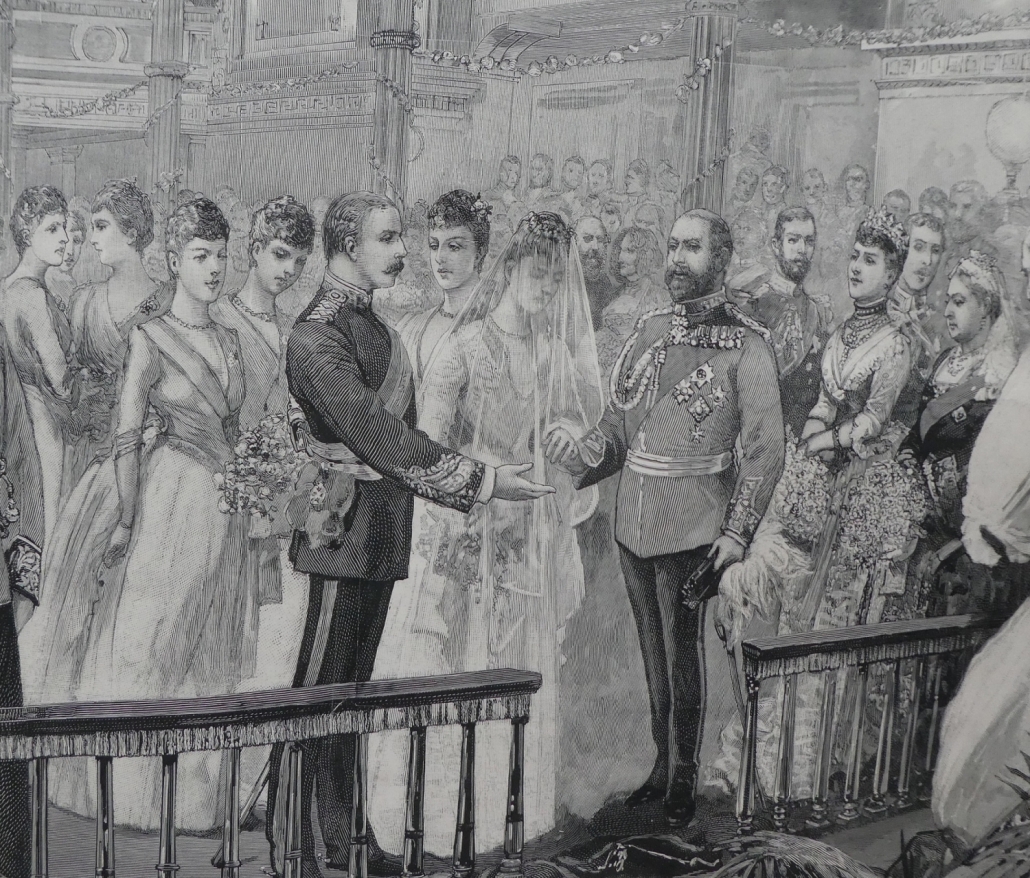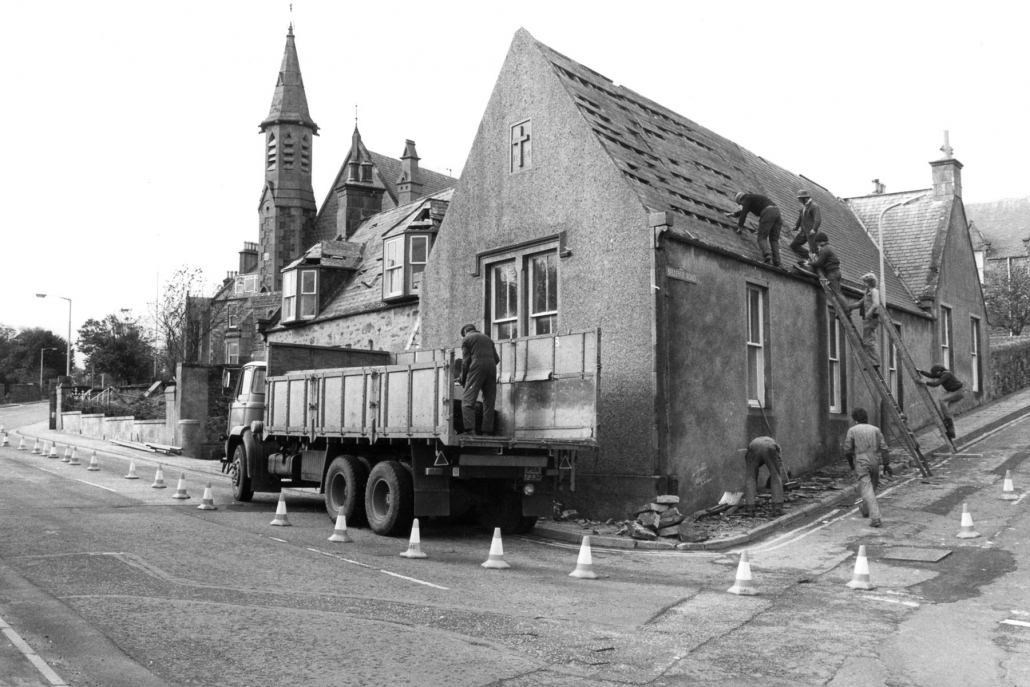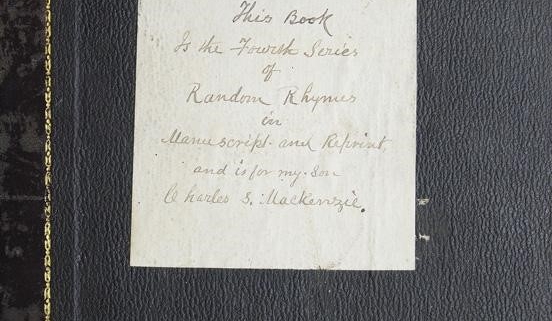27th July. Louise and Alexander’s marriage service started at noon, 131 years ago today. Quite an auspicious marriage for Banff and Macduff, as Alexander was the Sixth Earl Fife with his main home being Duff House, and Louise was the Princess Royal, the daughter of the then Prince and Princess of Wales. Prince Edward became King Edward VII in 1901.
The ceremony took place in the Private Chapel at Buckingham Palace, attended by most of the British Royal Family as well as royalty from Germany, Denmark and Greece.
In the main picture in this Story, the foreground characters from the left, are some of the seven bridesmaids, Alexander, Louise, Prince Edward of Wales, Princess Alexandra of Wales and Queen Victoria.
The other photo in this article is a large silver two-handle cup that stands 24 inches high, has an engraved representation of Duff House and the couple’s coat of arms, and bears the inscription “Presented to H.R.H. the Princess Louise of Wales and The Earl of Fife, K.T. on the occasion of their marriage by the Inhabitants of the Royal Burgh of Banff, July 27, 1889”. A very handsome gift indeed.
A commemorative special Illustrated London News was published just four days later, and bearing in mind that this publication at that time did not use photos but hand drawn engravings – and there are sixteen of the actual wedding itself in this edition, one being a double page, and the rest at least half a page – is quite remarkable. Additionally this publication has several dozen engravings of other views, with about a dozen being of Banff and Macduff including Duff House; hence it is a great source for the heritage of the area.
Alexander was first made Duke of Fife and Marquess of Macduff two days later, and, unusually, in 1900 he received a second set of Letters Patent which amended the 1889 ones to allow the Duke’s titles to pass to his and Louise’s daughters Alexandra and Maud, as there was not a male heir.
The 1st Duke of Fife died in 1912 from pleurisy likely as a result of complications from being shipwrecked off the coast of Morocco while on a cruise on the ss Delhi; the rest of his family all survived. Louise, Duchess of Fife is reputed not to have favoured Duff House, and hence the gift of the estate to the people of Banff and Macduff in 1907. She is of course the person behind the name of the sports and community club and making Banff and Macduff the only place in the world with two Royal golf courses. Louise died in 1931, and her remains are with her husband’s in St Ninian’s Chapel at Mar Lodge.

From the people of the Royal Burgh of Banff, silver, stands 24 inches tall.


 BPHSMOB
BPHSMOB

